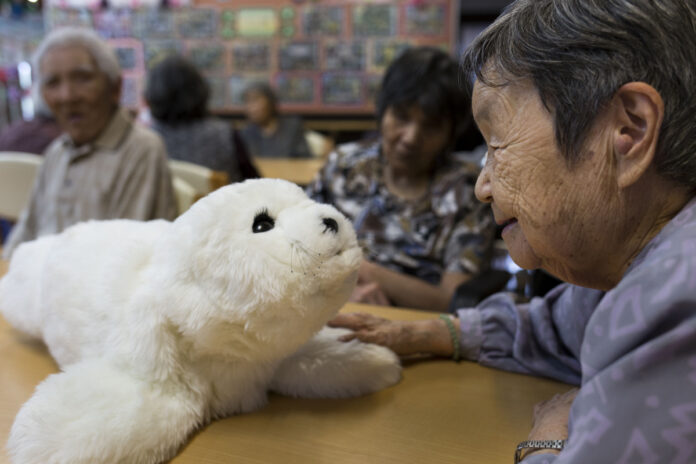By Sigal Samuel Sep 9, 2020 for Vox
Even before Covid-19 came around, robots like these were being introduced in nursing homes and other settings where lonely people are in need of companionship — especially in aging societies like Japan, Denmark, and Italy. Now, the pandemic has provided the ultimate use case for them.
The most well-studied robot, Paro, comes in the form of a baby harp seal. It’s adorable, but the US has recognized it as more than just that, classifying it as a medical device. It coos and moves, and its built-in sensors enable it to recognize certain words and feel how it’s being touched — whether it’s being stroked or hit, say. It learns to behave in the way the user prefers, remembering the actions that earned it a stroke and trying to repeat those. In older adults, notably those with dementia, Paro can reduce loneliness, depression, agitation, blood pressure, and even the need for some medications.
As companies urge us to let their robots care for our parents and grandparents, we might feel like we don’t need to visit them as much, figuring they’ve already got the company they need. That would be a mistake. For many older adults, interacting with a robot would feel less emotionally satisfying than interacting with a person because of the sense that whatever the robot says or does is not “authentic,” not based on real thoughts and feelings.
But for those who have no one or very few people to interact with, contact with a robot is probably better than no contact at all. And if we use them wisely, robots can improve quality of life.
Some particularly well-designed robots, like Paro, have also been shown to increase human-to-human interaction among nursing home residents and between seniors and their kids. It gives them something positive to focus on and talk about together.
Paro has been around for many years, which I think speaks to its success. The route of choosing a comforting presence that is not trying to be human is effective. There are also dogs and cats that are sold as therapeutic pets meant to comfort seniors who otherwise are alone. I like the simple aspect of positive reinforcement that encourages calm and peaceful interaction.
How could I use similar aspects from Paro to create a positive presence that could be used during mealtimes when seniors feel especially alone?
Source: https://www.vox.com/future-perfect/2020/9/9/21418390/robots-pandemic-loneliness-isolation-elderly-seniors




